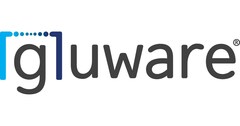Titanium Sponsors
Inquest

Platinum Sponsors
Leonardo DRS

Gold Sponsors
Modern Technology Solutions, Inc.

University of Dayton
Department of
Computer Science

Gluware

Social Media
Our LinkedIn Group: OISF at LinkedIn
OISF on YouTube: OISF on YouTube
Tweets by @oisf
Meeting Notes - November 10th, 2016
10th November 2016When shopping on Amazon this holiday season, make sure to use our Amazon Smile link. It doesn't cost you anything extra and a portion of the price goes to OISF. It's a simple way to keep us running.
Discussion Stories
- Use this Amazon Smile link to support OISF
- This won't cost you anything or make your purchases more expensive, this takes money from Amazon and gives it to us.
- Charles Monett's IP Camera Firmware Scripts
- Scripts used in this month's presentation!
- Download the presentation slides right here: PDF / PPTX
- Politico's Morning Cyber Security Briefing
- A daily dose of infosec policy and news
- Mirai Malware - Malware that has been terrorizing the internet via DDOS attacks
- Patch your Linux kernels! Dirty COW vulnerability announced and patched.
- Google discloses Windows zero-day before Microsoft releases patch
CubeSat Secure Communication Notes
We had a very interesting discussion on how to secure CubeSat communications, here are those notes:
Limitations:
- System limitations
- 16Mhz Processor
- 512 kb flash storage (~256 kb workable)
- 80 kb RAM (unknown workable amount)
- ~800 bits per second transfer rate
- Only works when you can see the CubeSat
- Uses a 16-byte command string
- Most programming done in C
- Runs freeRTOS
- Needs something that will survive a VERY harsh environment
- Radiation can randomly reset the system, corrupt memory, etc
- Unknown transfer error rate
- No guarantees on transfer delivery (think UDP)
- System limitations
Good things:
- An attacker breaching the system has little real consequence
- The attacker could restart the device
- The attacker could stop commands in progress or issue commands that the CubeSat doesn't need
- The attacker cannot reprogram the device (firmware is set)
- The attacker could break international radio regulations
- This has no real effect on anyone
- The attack could be annoying, but cannot cause damage
- An attacker breaching the system has little real consequence
Thoughts on securing the communications channel:
- Encryption:
- Diffie–Hellman key exchange
- One-time pad (based on time window)
- Size is limited on the device
- Shared Secret (pre-shared key)
- ED25519 Public Key Encryption
- It was decided that public-key crypto is far too big to transmit
- Double Ratchet Algorithm
- Design to be self-healing
- Doesn't require an always-on connection
- Still probably too big to transmit...
- Command signing?
- DirectTV-style Memory Puzzle
- Send the command as small pieces of useless memory and memory locations that a C program will put into a buffer
- Once enough pieces have been send, the c program can re-arrage the resulting data into a legitimate command
- Only the architect of the program knows the correct sequence and memory locations
- Encryption:
Other notes:
OISF lives on your donations. Shake down your boss: Become a donor today. OISF is a 501c3 organization and donations are tax deductible. For more information, email info@ohioinfosec.org.